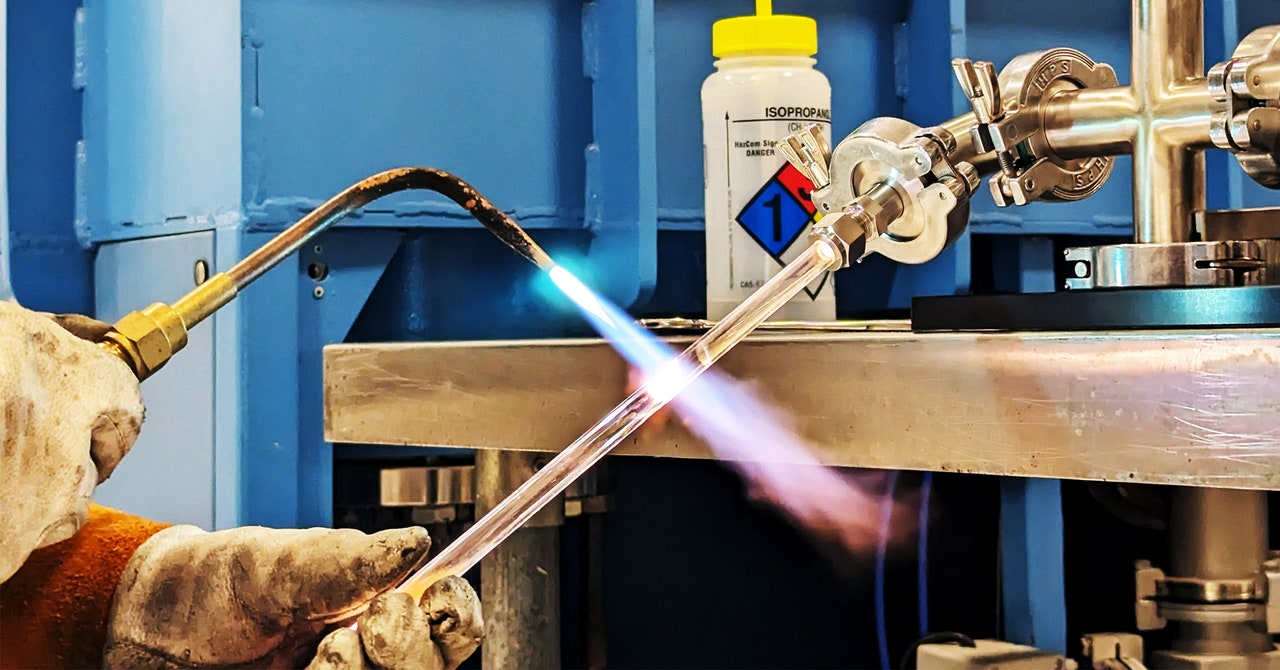All that Andrew McCalip wanted for his 34th birthday was a shipment of red phosphorus. It was a tough request—the substance happens to be an ingredient for cooking meth and is controlled by the US Drug Enforcement Agency—but also an essential one, if McCalip was going to realize his dream of making a room-temperature superconductor, a holy grail of condensed matter physics, in his startup’s lab over the next week. It required four ingredients, and so far he had access to three.
His followers on X (that is, Twitter, post-rebrand), offered ideas: He could melt down the heads of a pile of matchsticks, or try to buy it in pure form off Etsy, where the DEA might not be looking. Others offered connections to Eastern European suppliers. They were deeply invested in his effort. Like McCalip, many had learned about a possible superconductor called LK-99 earlier that week through a post on Hacker News, which linked to an Arxiv preprint in which a trio of South Korean researchers had claimed a discovery that, in their words, “opens a new era for humankind.” Now McCalip was among those racing to replicate it.
Superconductivity—a set of properties in which electrical resistance drops to zero—typically appears only under frigid or high pressure conditions. But the researchers claimed LK-99 exhibited these qualities at room temperature and atmospheric pressure. Among the evidence: an apparent drop in resistance to zero at 400 Kelvin (127 degrees Celsius) and a video of the material levitating above a magnet. The authors, led by Ji-Hoon Kim and Young-Wan Kwon, proposed that this was the result of the Meissner effect, the expulsion of a magnetic field as a material crosses the threshold of superconductivity. If that were true, it could indeed lead to a new era: resistanceless power lines, practical levitating trains, and powerful quantum devices.
On X and Reddit, large language models went by the wayside. The new star was condensed matter physics. Online betting markets were spun up (the odds: not particularly good). Anons with a strangely sophisticated knowledge of electronic band structure went to war with techno-optimistic influencers cheering on an apparent resurgence of technological progress. Their mantra was seductive, and maybe a little reductive: a return to a time of leapfrogging discoveries—the lightbulb, the Manhattan Project, the internet—where the impact of scientific discovery is tangible within the span of a human’s earthly presence. “We’re back,” as one X user put it.
Experts are doubtful. Multiple versions of the LK-99 paper have appeared online with inconsistent data—reportedly the result of warring between the authors about the precise nature of the claim. The researchers aren’t well known in the field, and their analysis lacks basic tests typically used to confirm superconductivity. Spurious claims are also so common in the field that physicists joke about USOs—“unidentified superconducting objects”—a play on UFOs. (Most recent sighting: a room-temperature, high-pressure material from a University of Rochester lab that has been dogged by accusations of plagiarism and rigged data.) There are more likely explanations for the levitation, explains Richard Greene, a condensed matter physicist at the University of Maryland, including magnetic properties in the compound in its normal, non-superconducting state. The betting markets probably had it right: Odds are the new era is not yet upon us.
But the claim is still worth checking out, Greene adds. In his long career studying superconductive materials, he’s seen advances come from outsiders with puzzling papers that explored unfamiliar types of compounds. That includes, in the 1980s, a class of materials that exhibited superconductivity above the boiling point of liquid nitrogen (–196 degrees C), making way for all sorts of applications, from magnetic resonance imagery to tokamaks for nuclear fusion. Plus, because physicists understand the mechanics of only certain forms of superconductivity, a seemingly strange or inconsistent result can’t immediately be discounted. Perhaps it’s just something nobody has seen before.
Read the full article here





